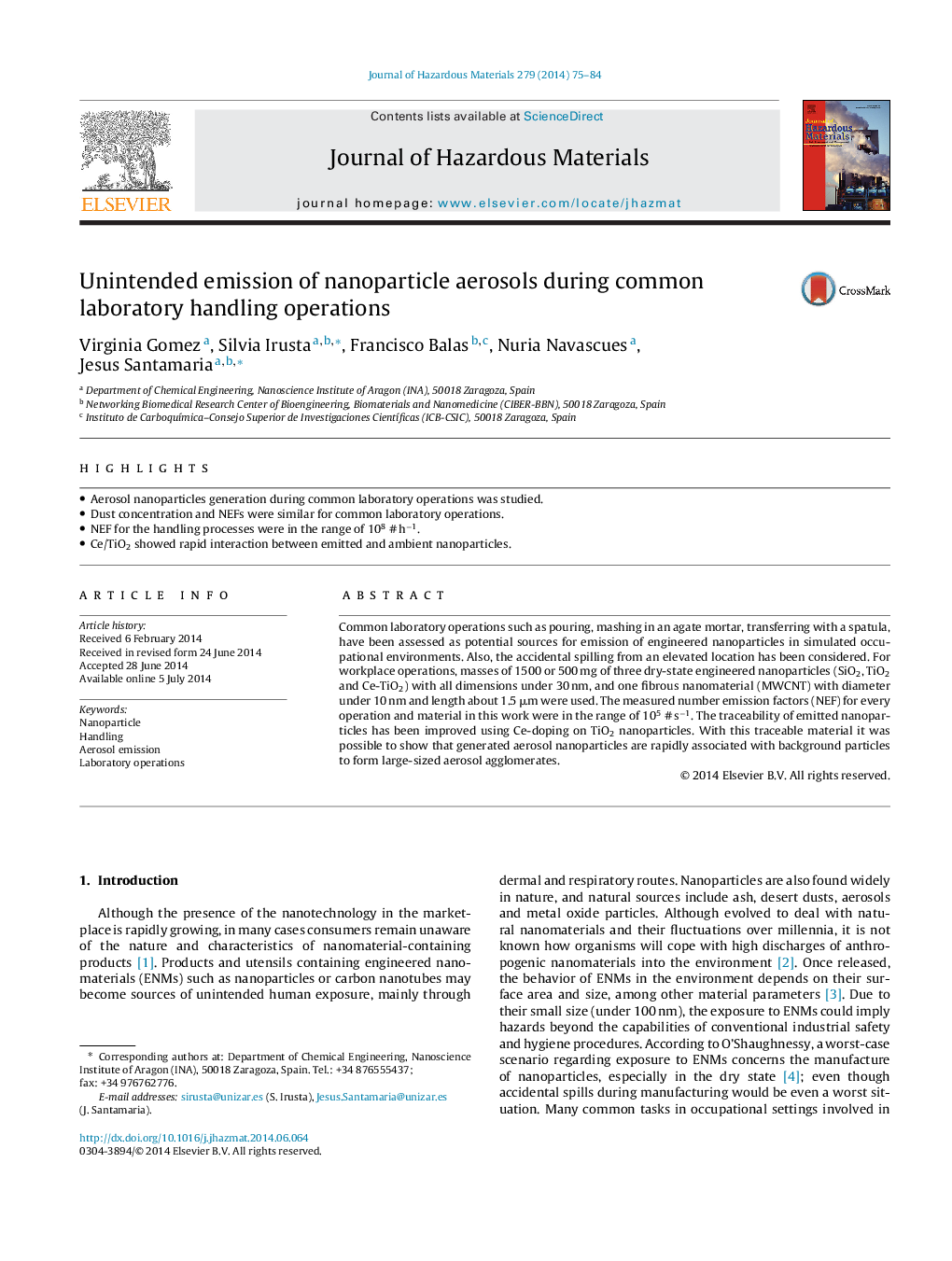| Article ID | Journal | Published Year | Pages | File Type |
|---|---|---|---|---|
| 576585 | Journal of Hazardous Materials | 2014 | 10 Pages |
Abstract
Common laboratory operations such as pouring, mashing in an agate mortar, transferring with a spatula, have been assessed as potential sources for emission of engineered nanoparticles in simulated occupational environments. Also, the accidental spilling from an elevated location has been considered. For workplace operations, masses of 1500 or 500 mg of three dry-state engineered nanoparticles (SiO2, TiO2 and Ce-TiO2) with all dimensions under 30 nm, and one fibrous nanomaterial (MWCNT) with diameter under 10 nm and length about 1.5 μm were used. The measured number emission factors (NEF) for every operation and material in this work were in the range of 105 # sâ1. The traceability of emitted nanoparticles has been improved using Ce-doping on TiO2 nanoparticles. With this traceable material it was possible to show that generated aerosol nanoparticles are rapidly associated with background particles to form large-sized aerosol agglomerates.
Keywords
Related Topics
Physical Sciences and Engineering
Chemical Engineering
Chemical Health and Safety
Authors
Virginia Gomez, Silvia Irusta, Francisco Balas, Nuria Navascues, Jesus Santamaria,
